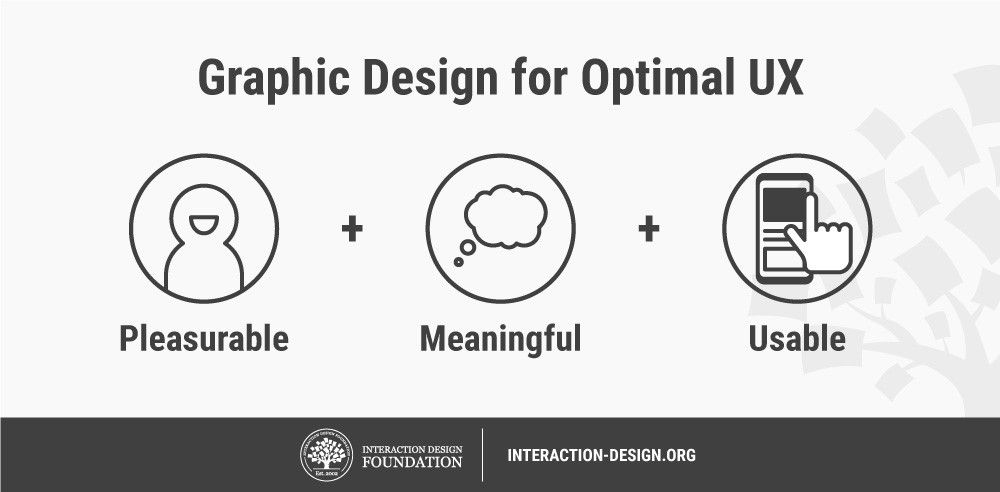Graphic Design is a craft where professionals create visual content to communicate.
By applying visual hierarchy and page layout techniques,designers use typography and pictures to meet users specific needs and focus on the logic of displaying elements in interactive designs,to optimize the user experience.

Graphic Design is about Molding the User Experience Visually
Graphic design is an ancient craft, dating back past Egyptian hieroglyphs to at least 17,000-year-old cave paintings. It’s a term that originated in the 1920s’ print industry. It continues to cover a range of activities including logo creation. Graphic design in this sense concerns aesthetic appeal and marketing. Graphic designers attract viewers using images, color and typography. However, graphic designers working in user experience (UX) design must justify stylistic choices regarding, say, image locations and font with a human-centered approach. That means you need to focus on—and seek to empathize the most with—your specific users while you create good-looking designs that maximize usability. Aesthetics must serve a purpose—in UX design we don’t create art for art’s sake. So, graphic designers must branch into visual design. When designing for UX, you should:
- Consider the information architecture of your interactive designs, to ensure accessibility for users.
- Leverage graphic design skills to create work that considers the entire user experience, including users’ visual processing abilities.
For instance, if an otherwise pleasing mobile app can’t offer users what they need in several thumb-clicks, its designer/s will have failed to marry graphic design to user experience. The scope of graphic design in UX covers the creation of beautiful designs that users find highly pleasurable, meaningful and usable.
“Design is a solution to a problem. Art is a question to a problem.”
— John Maeda, President of Rhode Island School of Design


